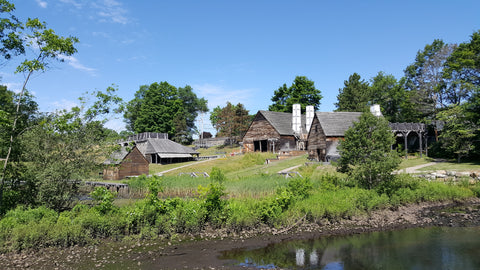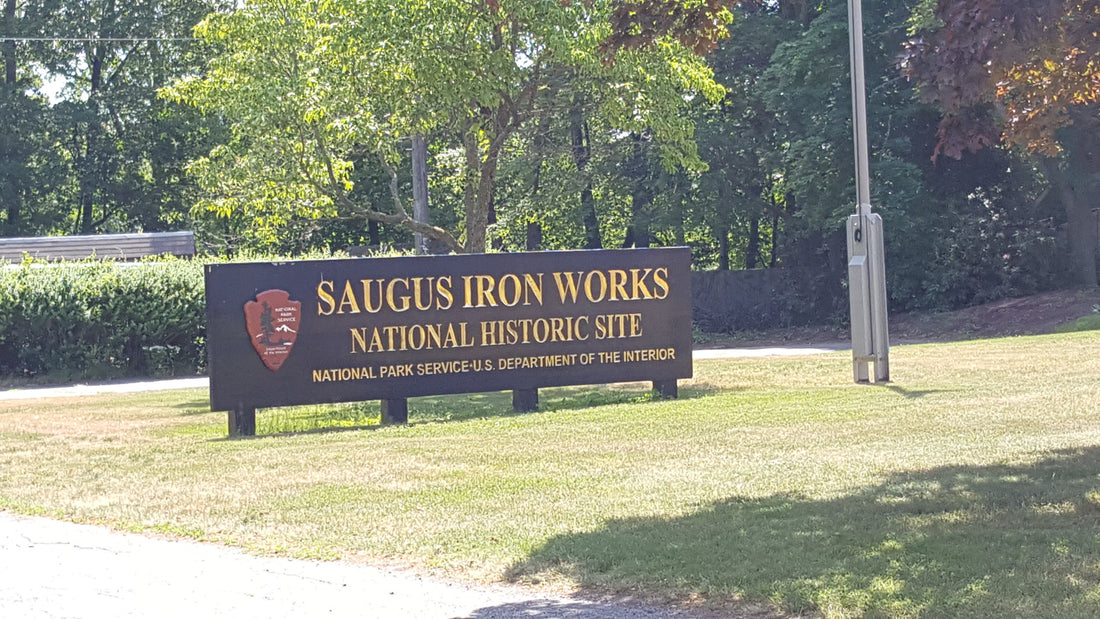On my way back to the shop in Portland I stopped to visit the Saugus Iron Works National Historic Site in Saugus, Massachusetts just north of Boston. The axe could not have been the tool that built America without the iron and steel industry.
And that industry started in coastal Massachusetts. Operating from around 1646 – 1668, the Saugus Iron Works were the first integrated iron works in the New World. It was largely forgotten until after World War II when the Saugus site was restored. It opened to the public in 1954 and became a National Historic Site operated by the National Park Service in 1968.
Saugus was chosen as a perfect site for an iron works by Richard Leader in the 1640’s due to ample water power to run machinery, river access to move raw materials and finished goods, and proximity to the raw materials needed to make iron: iron ore, gabbro for flux, and timber to make charcoal.
The iron ore that was used at Saugus was “bog iron.” It was dug up in nearby marshy areas or pond bottoms. This bog iron was layered with charcoal and a gabbro rock as flux material and loaded into the charge hole at the top of the blast furnace. At Saugus the blast furnace stands 23 feet high.

[The Saugus Iron Works - from left to right - the blast furnace, forge and slitting mill]

[The charge hole where iron ore, gabbro (flux) and charcoal was loaded into the top of the blast furnace]
The carbon from the burning charcoal combined with the oxygen in the ore to produce carbon monoxide gas and iron. Heat was maintained by giant, water driven bellows.

The height of the blast furnace allowed the particles of iron to absorb carbon from the charcoal as it fell to the bottom of the furnace. The addition of carbon to the iron lowered the melting temperature of the iron allowing it to become liquid when it reached the crucible at the base of the furnace.
The liquid iron was released into a main channel hoed in sand with a number of side channels coming off it. The term “pig iron” is thought to have originated due to the pattern of small channels connecting to the main one looking like piglets suckling off a sow.

[Crucible opening at bottom of blast furnace with rows dug in sand to create the "sows"]
The cast iron coming out of the blast furnace was too brittle to be worked so the “sow bars” would then be taken to the finery. Here the sow bars were reheated to burn out the unwanted carbon and beaten with sledge hammers to remove any slag. Finally, the iron was shaped using a 500 lb. hammer to create “wrought iron” bars. These bars could be sold as raw material or, at Saugus, moved to the rolling and slitting mill to make nails or iron strips.

[wrought iron bars finished in the finery]
It was these wrought iron bars that were used by blacksmiths to make the axes to cut down timber to make the charcoal to make the iron to make the axes used in Colonial America.
The National Park Service has a great short film on iron making at Saugus. You can watch it here. If you find yourself in the Boston area the Saugus Iron Works prove a great journey into our industrial past.
Plan your trip at the National Park Service Saugus Iron Works website.
